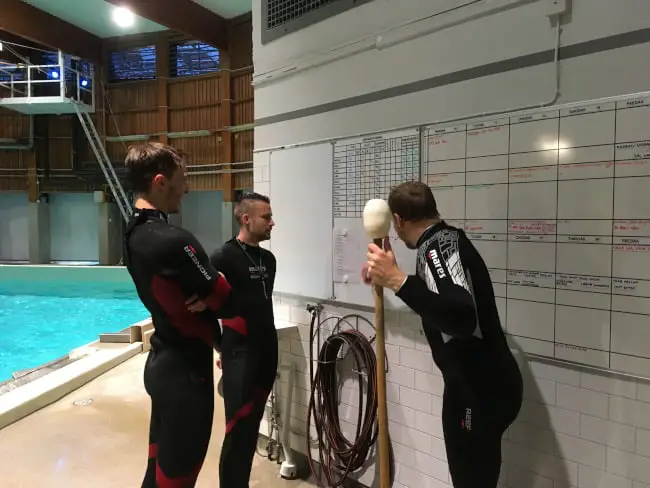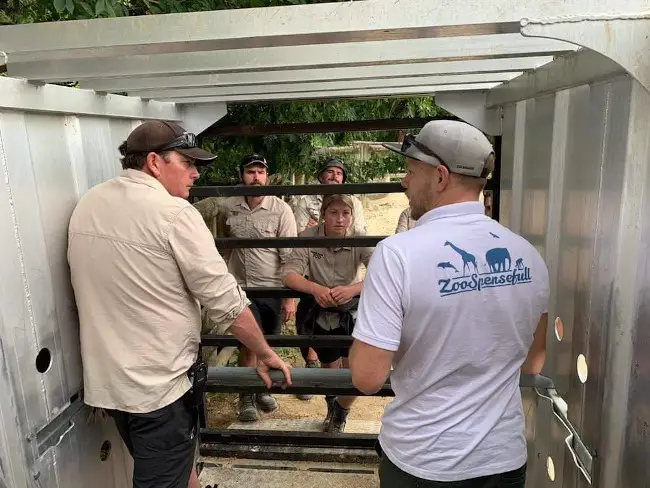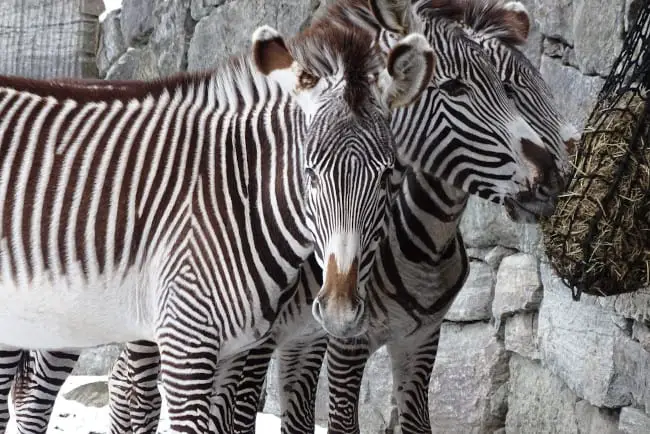Training an animal is one thing but building an actual training program with a specific system is another. There are many details we have to think about to make a program work within a zoological facility. A program doesn’t start with the animals but with the zoo itself. A well organised management team with modern thinking is a necessity to be successful. If the management team doesn’t believe in the pros of training there will be difficulties from the outset.
This guest article is written by Peter Giljam – Zoospensefull
Start building a training plan
If the management team is on board, we have to look into the knowledge and skill set of all the zookeepers within the zoo and their understanding of animal behaviour and training. To make sure everyone is on the same page it is advisable to make training courses to present to the keepers in your zoo. Keepers with a better understanding may find it easy and for some it’s a completely new concept but it is important that all the keepers will have taken and understood your training basics and terminology. This way you can ensure all staff have an understanding of what is expected as a minimum.
Each department with in the zoo will have its own goals to reach. But before we move into training goals, we have to first think about the welfare aspect of animal training. The main goal of any training project should have a welfare benefit to the animal. This means that we have to look into which reinforcer to use and if it is suitable for them. At the start the main focus should be which methods will we be using. Our belief is that we should always use operant conditioning, with the emphasis on positive reinforcement, this will have the highest welfare benefit to the animals we work with. This decision on which training strategy you will use is and should be made by the management team. The reason being that we need to work the same way across the entire zoo. If we are all on the same page we have a higher chance of helping, motivating and inspiring each other. Science is the same but the animals are not.
When you reach this point you are already over half way to a successful program. Having the management on board and having a philosophy in place puts the zoo in a strong position where we become part of the modern zoo. Animal training is not a luxury, it is a necessity to give the animals in our care a higher welfare standard.
The main goal of any training project should have a welfare benefit to the animal
There are 3 important driving factors when selecting our training goals. The first one is regarding proactive medical care and working with the veterinarians, to understand which procedures would best help them and the animals. Another factor is around how to educate the visiting public, usually through a presentation or public demonstration. The last factor and possibly the most important one, we will be training for our own efficiency.

Organisation of the program
We need to know which behaviour is conditioned with which animal as well as which trainer will train the behaviour. This is where documentation and record keeping is crucial. The use of a whiteboard or an electronic copy to compile this information. On the whiteboard we write down all the animals along the top and on the left side the name of the trainers. Then for each trainer and each animal we decide who is training which behaviour. On the computer we make an excel spreadsheet which has the animals on top and the behaviours on the left side. We fill in which behaviour the animal knows and which one is currently in training. We make an empty approximation plan for trainers to fill in when they will be training a new behaviour, this will help them to be pro-active. On the whiteboard we write the step of where the trainer is during their training behind the behaviour. This way we can keep track of the progress.

Communication towards the animals
Before we start training we have to think about which communication system we will apply to our animals. We will most likely use a bridge the question is what will this bridge mean to the animals. This is where it becomes difficult because each trainer has their own thoughts but we have to decide and agree collectively. I suggest to use the bridge as terminal bridge, then the bridge can be anything, clicker, whistle or a word. For some a whistle works best because it is a singular tone and your hands are free. For communication to work effectively we all need to communicate the same way to our animals.
If we decide to use a keep on going signal or a start/end of session signal then we have to agree to what we want our animal to understand. You can not have a terminal bridge that also means keep going. Each signal has its own meaning.
We suggest to think about the efficiency factor and what behaviours will have the most impact on the welfare of the animal and the greatest impact on your daily routine
Define goal behaviour
When we have successfully decided on the aspects of our training system, we now need to decide which behaviours we will be training first. We suggest to think about the efficiency factor and what behaviours will have the most impact on the welfare of the animal and the greatest impact on your daily routine. If your animals understand a signal which means come to me or shift, this will help with the proactive health care and save you a lot of time during the day.
Foundation behaviours should be the number one focus.
- Call over (start of session signal)
- Control
- Follow
- Gating
- Etc.
When these behaviours are set your day to day efficiency becomes better and you have a strong base for other training goals.

Enrichment
When an animal understands to come and shift reliably, the benefit is that a complex and strong enrichment program can be implemented. Safety plays a huge part in our jobs and being able to move animals from one exhibit to another allows for a well planned enrichment program. Dynamic enrichment programs are even more important than training, if you train your animals 3 times at 5 minutes a day, that is 15 minutes out of 24hrs. There is still 23 hours and 45 minutes left in the day which needs to be filled.